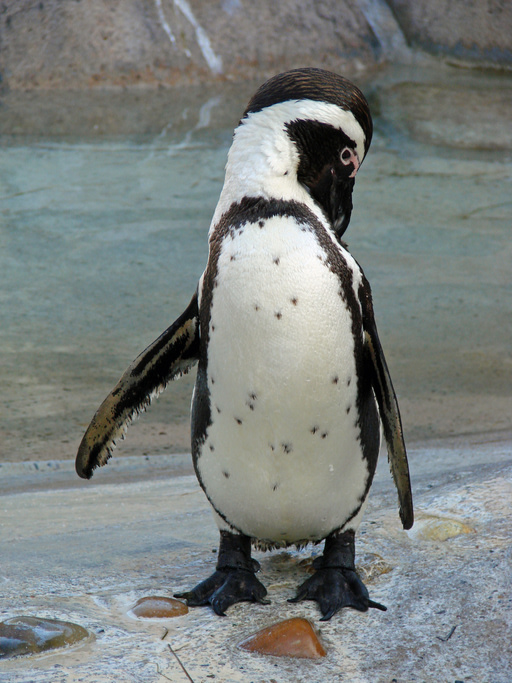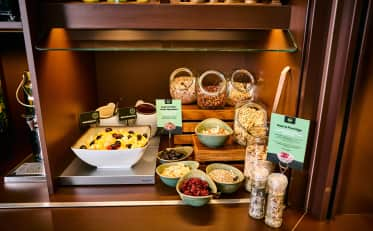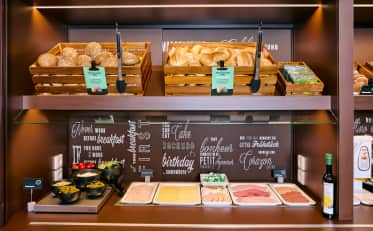
Stuttgart Wilhelma
In Baden-Württemberg, Stuttgart Zoo is called Wilhelma and is more than just a zoo: Wilhelma in the Bad Cannstatt district is the only German institution that combines a zoo and botanical garden. Around 1,200 animal species and more than 8,500 plant varieties attract over a million visitors every year, making Wilhelma one of the most visited zoological gardens in Germany.
The zoological-botanical garden is embedded in a listed park from the 19th century. This triad of zoo, botanical garden and historic park is what makes Wilhelma so rich and special. With around 11,000 animals, the zoo is one of the most species-rich in Germany and the world!
B&B Hotels can tell you which unusual animal species are at home here, how to get up close to the animals, where it's particularly exciting for children and when free guided tours take place. You should plan three to four hours for your visit, as the enclosures are embedded in an extensive natural and garden landscape. The zoo is only one kilometer away from the B&B Hotel Stuttgart - Bad Cannstatt and is open daily until 4.30 pm!
Meeting point: “Wilhelma” subway station! Tickets are available online or directly at the main entrance. Let's go!
Brief info on the animals
Wilhelma is home to an impressive variety of animals, including exotic species such as elephants, lions, emus, spectacled penguins and many more. The enclosures are designed to resemble the animals' natural habitat and offer visitors an authentic and educational experience. The elephant enclosure, for example, is spacious and offers the animals plenty of room to play and romp around. The enclosure for the great apes has also been modernized and enlarged to around 10,000 square metres.
Which is the smallest animal in the zoo? From April 1 to October 31, you can learn interesting facts about the animals and plants at Wilhelma and the history of the zoological-botanical garden on a 90-minute guided tour. The whole thing is free of charge and you don't need to book in advance! You can find the current dates here.
Mealtime: Feeding at the zoo
A special highlight at the zoo are the animal feedings. You can get very close to the animals. The bonobos, sea lions, gorillas and crocodiles are fed with commentary. If you have any further questions, you can also take advantage of the zookeeper consultation hour after the feeding.
The elephant bath also provides entertainment and takes place daily. Spending time with the animals and keepers is not only fun, but also helps to raise awareness of animal welfare. This is because the zoo is heavily involved in various species conservation projects and is committed to the preservation of endangered animal species.
Latest news: On Thursdays, the sea lion pool is cleaned. For this reason, the sea lions cannot be seen on this day and there is no show feeding.
Getting even closer to the animals
Whether snakes, keas or giraffes - you can get very close to your favorite animal during the animal encounters. You will be accompanied by the zookeepers, who will give you information about the animals or tell you stories about their everyday lives.
A visit to the farm is also a real highlight for children. Curious pygmy goats, soft camera sheep and robust Shetland ponies live here and are happy to be stroked by little Wilhelma guests. In addition to domestic rabbits and guinea pigs, the farm is also home to native breeds of domestic animals, some of which are threatened with extinction. These include the bright red Limpurger cattle and the Sundheim chickens from Baden.
The park, its themed worlds and historic buildings
How about an exciting walk through the park? The zoological-botanical garden, which covers around 30 hectares, is the last part of a park landscape that was laid out by the master builders of earlier kings. It encompasses the entire palace garden from Schlossplatz in the heart of the city via Rosensteinpark to Wilhelma. Because of its shape, this contiguous piece of parkland with its complementary grounds is also known as the “Green U”.
Historic Moorish-style buildings can be found throughout the royal park. In the 19th century, oriental gardens dominated, representing elegance, luxury and a blaze of color. This is why Wilhelma, with its horseshoe arches, crescent-shaped corner towers and mighty domes, is also known as the “Alhambra on the Neckar”.
Various themed worlds inspire adults and children alike: Terra Australis takes you to the fifth continent, where koalas and the rare quokkas peer curiously out from between the bushes. In the Asia theme world, which reflects rocky mountain landscapes and dry desert areas, you can meet lions and antelopes.
Other themed worlds include South America, Amazonia, Africa and the Insectarium. Here you can observe the animals in their natural habitat or take a stroll through the Moorish garden.
B&B HOTELS wish you a great stay!
























































































